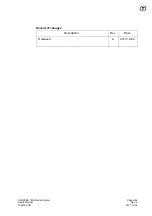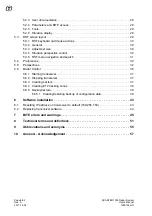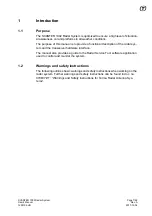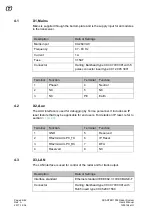
Page 9/62
Rev. A
2017-12-04
SCANTER 1002 Radar System
User’s Manual
1255194-HO
1.2.1
Microwave radiation safety margins
Additional safety margins in respect of microwave radiation can be obtained by
increasing distances to the radiating antennas.
As a rule of thumb, the power density is inversely proportional to the square of the
distance from the radiating source. Thus, increasing the distance with a factor of 10
will reduce the power density with a factor of 100.
However, this is only true in the far fields distance.
Furthermore, sector transmission is normally implemented, stopping transmission
for the parts of the antenna rotation not covering the ground surface. Also, power
sectors can be defined in which the transmitted power is reduced.
For additional safety, the SCANTER 1002 transmitter is closed down when anten-
na rotation is stopped.
Further information is available in doc. no. 721099-RK.
1.2.2
Physical safety
Be careful and use extreme caution when removing and lifting heavy objects as this
can cause physical injuries.
For rotating machinery in normal operation, the hazard zone is inside the cover of
the radar and is not accessible for any operator.
1.3
References
•
According to the ICNIRP guideline, the limit for the incident power density
level for the general public is 10 W/m
2
in the frequency band from 1-300
GHz and over any 6 minute period. The SCANTER 1002 radar operates
within this frequency range. The corresponding level for occupational expo-
sure is 50 W/m
2
.
721002-DP
SCANTER 1002 GSR Radar - Product Specification
357641-HO
SCANTER Radar Service Tool - Operator’s Manual
357641-HI
SCANTER Radar Service Tool - Installation Manual
721089-RA
SCANTER 1000 Series Transceiver Core Software Open
Source Licenses
721089-SC
SCANTER 1000 Series Transceiver Core SW GPL Source Code
721099-RK
SCANTER 1000 Series Antenna Power Density Analysis
970637-HT
Warnings and Safety Instructions for Terma Radar Antenna Sys-
tems










































